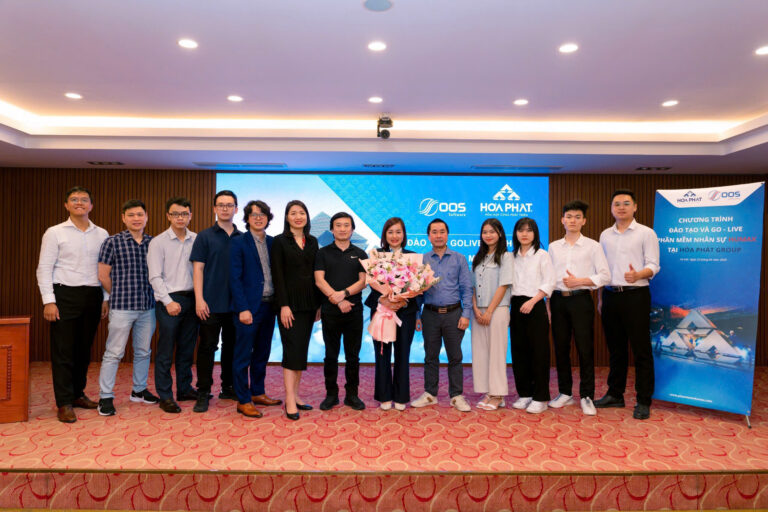Mid-level managers in the business are often the subjects under the most pressure, and are also the ones who are most likely to fall into heated debates.
Proposing ideas to senior leadership, defending ideas against peer managers, communicating decisions to employees… these are everyday stories that a middle leader has to deal with, and stress can can happen in any conversation.
According to Dr. Tran Thanh Nam - Lecturer in Psychology at the University of Education, Hanoi National University, the tension comes from the conflicting attitudes, intentions and expectations of the parties involved in communication. It's something no one wants, but once one person gets angry, the other tends to get carried away.
In a study published in the psychiatric journal Psyneuen-journal.com, when we observe someone under stress — especially a coworker or family member — our nervous system is immediately affected. ie. Research concludes that people will reflect the emotions they receive from the other person in communication.
So, how to avoid stressful communication at work, especially for middle leaders?
Emotion management
To reduce stress in communication in the workplace, psychologists and human resources experts suggest the following methods:
- Active listening: That is, in addition to listening, one must also understand what the other person wants to convey after the words. Positive is understood in the sense that we ourselves pay attention and respect the opinion of the person who is communicating with us.
In debates, you should only say how you feel, not criticize or attack the interlocutor. The parties need to stick to the question “What is the ultimate purpose of the conversation?
– Label comments: When receiving any feedback, it is necessary to look at it from the point of view of resolving the general work content or not. If the words are only personal attacks, they will continue to use other emotional stabilization measures, or find ways to reduce the temperature of the conversation. And if the feedback has an angry tone but is still directed to the content of the work, all the more reason for us to be calmer than they are. Choose a more generous view of the person who is angry with you, the attitude will also be more gentle.
– Handling emotional “boiling” point: The emotional "boiling" point, according to Dr. Tran Thanh Nam, is the time when anger is in danger of breaking out. Once we pass the "boiling" point, we can think rationally. Each individual will have a way to relieve the "boiling" point suitable for each situation and person. For example, when anger comes in a meeting, you should take a deep breath, find a way to turn your eyes to another subject such as the ceiling or the beautiful secretary to forget the moment of anger. The principle of "boiling" management is to reduce the focus on the stressor, and overcome the anger within.
Methods of meditation: The advice of experts is that leaders should practice this method and make it a habit. Meditation will help control emotions better, see more clearly about people and things. This is intended for times of stress, so that the meditator who has the right judgments about the person from the start will not overreact.
How to deal with “hammer” and “anvil”?
With senior leaders:
Nguyen Ngoc Thinh, former head of the CellphoneS human resource training department, said that the principle of leadership is to pay attention to the long-term vision and how the policies will affect the overall business. Therefore, if the proposals are too detailed, they will not receive much attention. Therefore, the middle manager himself, before conducting a conversation with the leader, must carefully study the mentioned situation, the company's policy mechanisms, where there are shortcomings leading to the current situation.
Leaders get angry very easily when, in addition to growing the business, they have to deal with the proposals you bring. In addition, middle managers need to see from the perspective of business leaders.
For example, in the case of discussing a salary increase for an employee, you will have to prepare an answer in advance about how the employee is doing? Why deserve a raise? Is this salary increase compared to rival businesses reasonable? What new benefits will the salary policy I propose bring to the business? With a change like this, how will employees behave?
With junior staff:
Tensions often arise when organizational structure changes, or decisions directly affect the interests of individuals. In these cases, employees should not be contacted in the working environment, but need to separate them into another space to exchange, and it is necessary to have a certain closeness built up gradually.
First, you need to capture the life and work problems that employees are facing at the moment, then find out what they really want to pursue, and then help them decide what to do. redirect them to suit the new mechanism they are about to introduce, explaining why they are placed in a new position in the new mechanism instead of as before.
But one rule to remember is to recognize the value the employee has created for the organization and the potential of the new position. Messages must be conveyed in the direction of "long silent rain", not able to concentrate all in one exchange.
From the practical example implemented, the HR training consultant of the Happy Coach project Tran Thi Thuy Linh shares a convincing story about reducing the salary and the position of a department head employee to a lower level. At the time of the decision of the leadership, Ms. Linh started a private meeting at the cafe.
Her first question was about life: “Are you under pressure at this level? Are you tired of your current job?” The answer received was "yes", and the situation was overworked, and there was no time to rest, opposing pressure from relatives.
“What is your happiest moment at work?” is the next question, and she discovered that this employee feels "the time to sit and work with the product programmers" is the most comfortable. The story just stops there, because according to Ms. Linh, human resources will need some space for them to compare themselves in the two positions. The next time she met, Linh proposed a new position and salary.
As a result, the head of the department agreed with the new decision of the management without any negative reaction.
– With peer management:
“In debates, you should only say how you feel, not criticize or attack the interlocutor. When there is tension in meetings, I often suggest taking a 5-10 minute break to cool down the conversation,” Linh said.
If the parties stick to the question “What is the ultimate purpose of the conversation?” then the story will only focus on the work, not on the people - the subject of tension.
According to Saigon Entrepreneurs
























